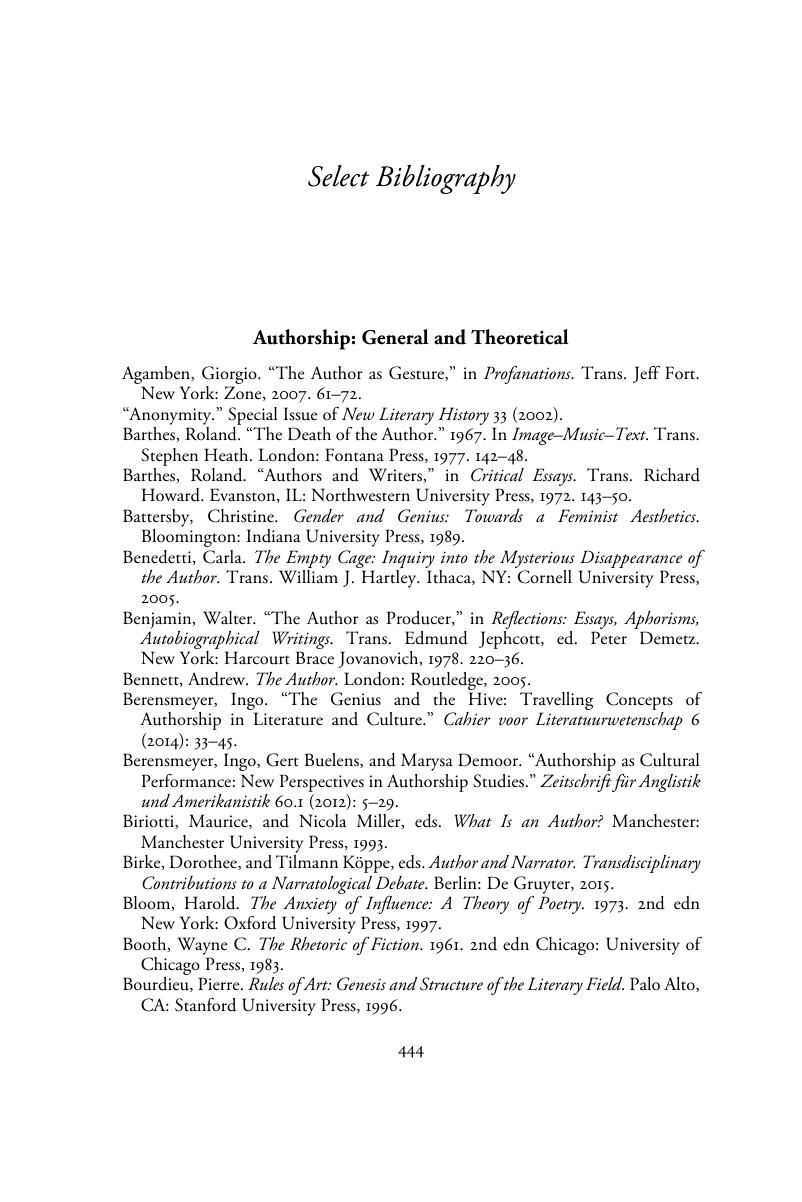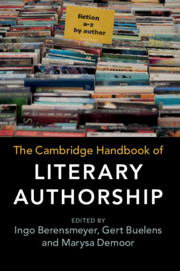Book contents
- The Cambridge Handbook of Literary Authorship
- The Cambridge Handbook of Literary Authorship
- Copyright page
- Contents
- Figures
- Contributors
- Acknowledgments
- Abbreviations
- Chapter 1 Introduction
- Part I Historical Perspectives
- Part II Systematic Perspectives
- Part III Practical Perspectives
- Select Bibliography
- Index
- References
Select Bibliography
Published online by Cambridge University Press: 07 June 2019
- The Cambridge Handbook of Literary Authorship
- The Cambridge Handbook of Literary Authorship
- Copyright page
- Contents
- Figures
- Contributors
- Acknowledgments
- Abbreviations
- Chapter 1 Introduction
- Part I Historical Perspectives
- Part II Systematic Perspectives
- Part III Practical Perspectives
- Select Bibliography
- Index
- References
Summary

- Type
- Chapter
- Information
- The Cambridge Handbook of Literary Authorship , pp. 444 - 457Publisher: Cambridge University PressPrint publication year: 2019



